Efforts by the “birthplace of sea turtle conservation” to increase hatchability with measures against temperature rise
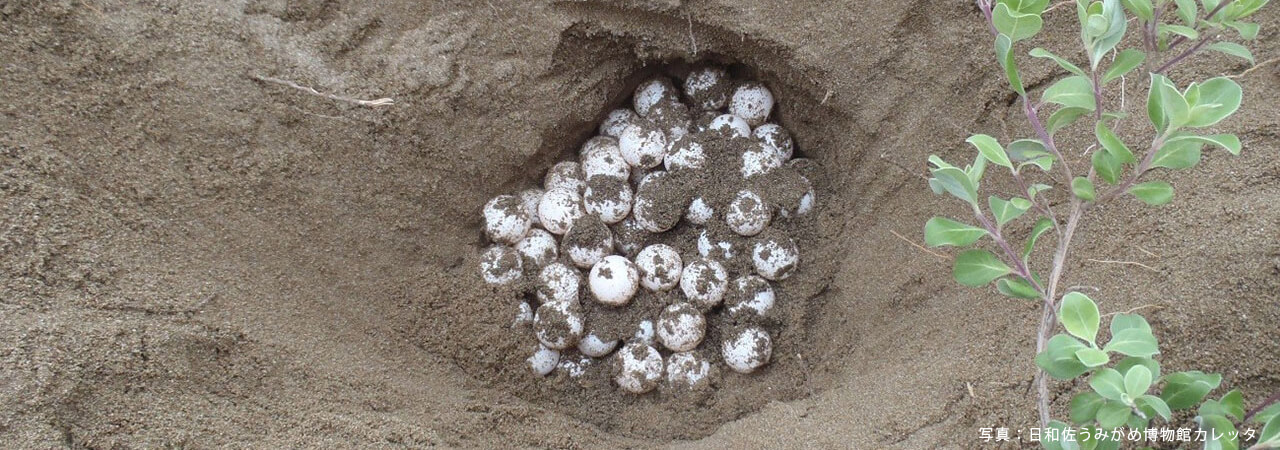
The Ohama Coast of Hiwasa in Tokushima Prefecture is a 500-meter long sandy beach stretching in a gradual arc. Between late May and mid-August every year, loggerhead turtles come to the beach to lay eggs. In this area, where the whole community has engaged in conservation efforts for more than half a century, a challenge of “a decline in the hatchability” is arising.
We interviewed Hiroki Tanaka, Curator at the Hiwasa sea turtle museum “Caretta” about the current situation and measures for sea turtle conservation on the Ohama Coast of Hiwasa.
The number of sea turtle landings plummeted to one digit.
The Ohama Coast is the “birthplace of sea turtle conservation,” the first place where a landing and spawning survey was conducted in the world. In 1950, middle school students found a sea turtle killed for food on the coast. To prevent such a case from happening again, they started an activity for breeding and rearing sea turtles at school. This activity was developed into community-wide efforts. In 1967, “sea turtles on the Ohama Coast and the spawning ground” were designated as a national natural treasure.
In those days, sea turtles came ashore a large number of times. In 1968, a record high of 308 times. The number mostly remained over 100 until it plummeted in and after 1996. (Figure 1)
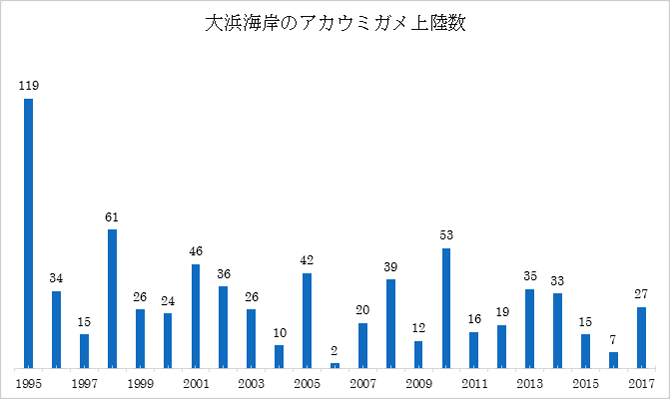
Figure 1: The number of loggerhead turtle landings on the Ohama Coast (1995 to 2017)
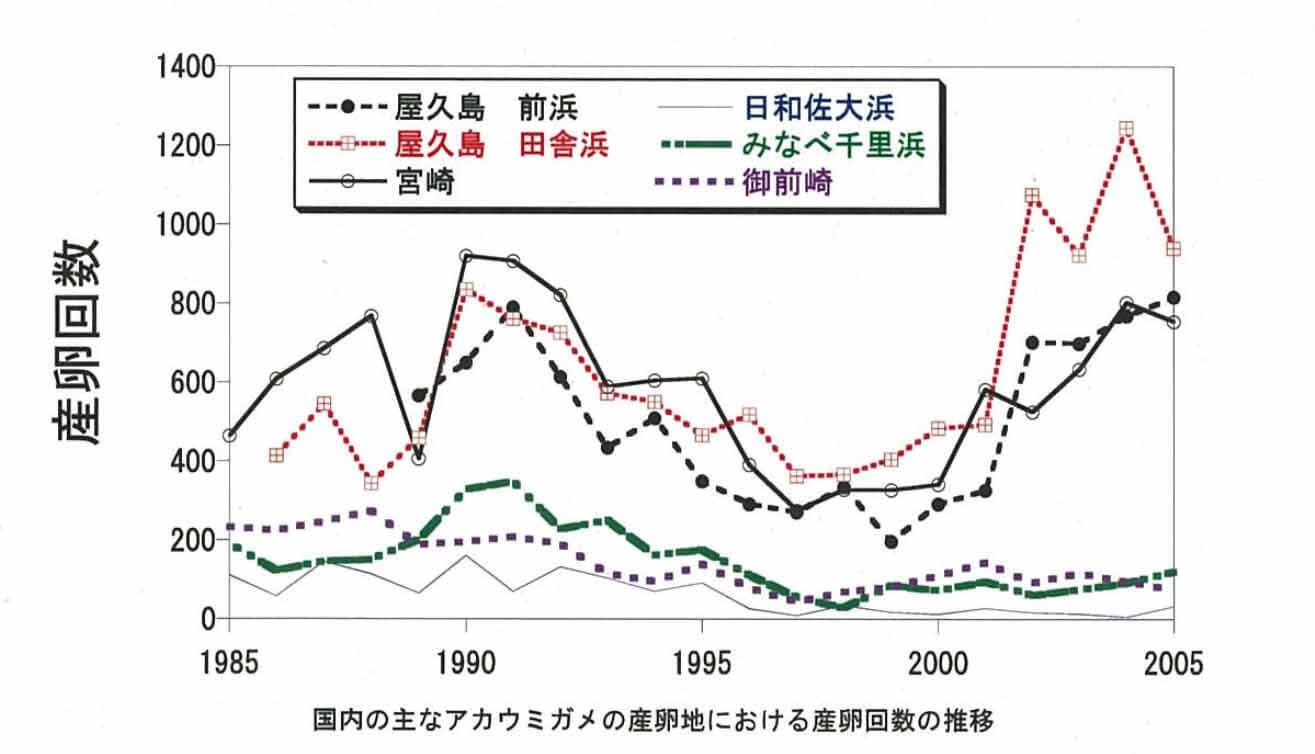
Figure 2: Changes in the number of loggerhead turtle spawnings in major spawning grounds in Japan
According to the Sea Turtle Association of Japan, spawning of sea turtles in Japan declined by 60% between 1990 and 2000. The recent fall is part of a national trend. (*1) On sandy beaches in southern Kyushu, however, the number has been gradually increasing since 1998 whereas has not rebounded in Tokushima Prefecture. (Figure 2, *2) Experts cite as main reasons “accidental capture during fishing” and “deteriorated beach environment.”
Tokushima Prefecture has about 60 small coasts accessible to people. Many of the sandy beaches are eroded and gone due to development. In the aftermath of the 2011 Great East Japan Earthquake, the awareness of disaster preparedness has increased and more and more coast development including strengthening of seawalls is taking place. In Tokushima Prefecture, towns are very often close to coasts. It is known that lighting significantly affects parent turtles coming ashore and young turtles heading for the sea.* Sea turtles are said to return to a place they are born. They, however, are flexible to adapt to a new situation. Less and less sea turtles may be choosing this coast as a spawning ground.
- Parent turtles tend to avoid white light consisting of various wavelengths of light. Street lamps and other artificial lighting are contributing to the fall in the number of landings. Young turtles rely on very weak ultraviolet rays on the sea to detect the direction of the sea and may not reach the sea if there is lighting on the land.

The number of hatching turtles fell due to a rise in sand temperature.
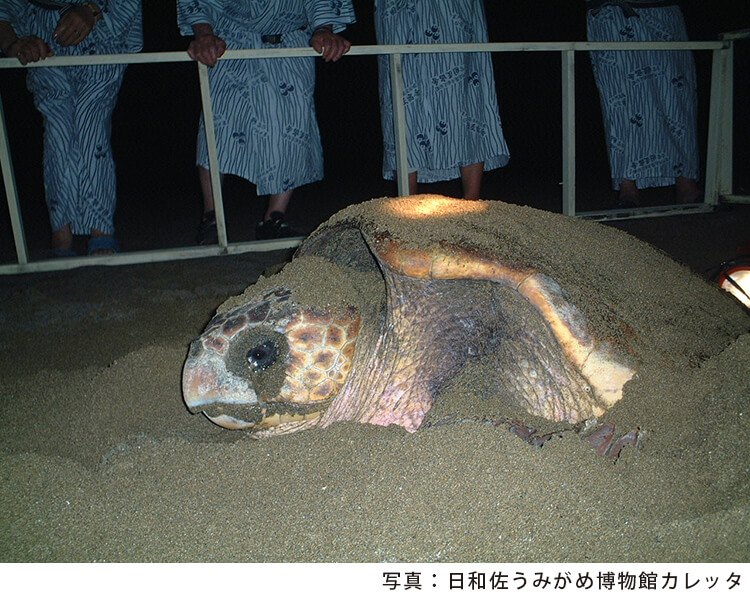
A sea turtle lays around 120 eggs at a time. It spawns four or five times in one season with a break of two weeks between spawnings although that slightly varies with the size, the capacity of the belly and availability of food. Eggs are warmed with sand and they hatch in about two months. The temperatures are required to range between 24 and 32°C. If eggs are exposed to temperatures outside the range for long hours, they will die.
In many of the past 10 years, the hatchability has been low on the Ohama Coast. Especially, in years with hot summer or little rain, not a single egg hatched in some nests. We measured the temperature of the sand and they far exceeded 33°C in extremely hot July and August.

- Comparison in sand temperature between 2014 when the hatchability was normal and 2015 when the hatchability was low. The hatchability was particularly low in 2010, 2013 and 2015. (Source: Report of Monitoring Sites 1000 sea turtle program in FYs 2014 and 2015 (Ministry of the Environment))
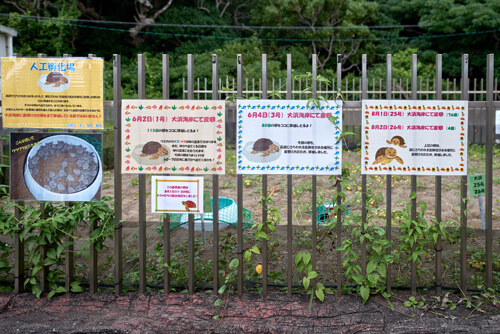
Sand temperature is critical to sea turtles. The temperature during hatching determines the gender of eggs. If the temperature is above 29.5°C, the hatchings will be female. If it is below the level, the hatchings will be male. On a coast with low sand temperatures, many turtles will be born male. With high sand temperature, they will be born female. Coasts, therefore, can be divided into birthplaces of males and those of females. It can be said that the natural gender ratio of sea turtles is balanced by sand temperatures.
Sand temperatures greatly depend on daylight hours and rainfall. Long daylight hours result in high sand temperatures and high rainfall lowers the temperatures as the surrounding heat is consumed by evaporation. The color and quality of sand has also something to do with the temperature. For example, white coral sand commonly seen on tropical beaches seems to be hot but it is actually low in temperature as the sand reflects light.
On the Ohama Coast, the sand temperature in summer normally exceeds 30°C and it seems that more female turtles than males are born. If the temperature continues to exceed 33°C as it does now, no sea turtles will be born on the Ohama Coast. That is why we have launched efforts to lower the nest temperature and increase the hatchability. In an extreme instance, all the eggs may hatch if they are put into an incubator and the temperature is carefully controlled. However, there are overseas cases where human intervention has resulted in a shortage of males or females. Too much control is risky. We have tried to maintain the gender ratio of hatching turtles as natural as possible only giving help to the nests very likely to be exposed to high temperatures.
One of the basic conservation activities is nest relocation. If eggs are laid in a too low area on a coast, they might be washed away by tidal waves. In that case, we move the eggs to a hatchery of the museum or another place on the coast. When relocating on the coast, we will carefully choose a low place in shade or in a vegetation zone where tidal waves won’t reach. The farther away you move from the sea, the higher the sand temperature tends to be. The next step is measures against high temperature. Even in a hatchery, the sand temperature easily rises as we have more extreme heat in summer than before. We sprinkle water regularly to prevent the temperature from rising too high. The nests left on the coast are covered with blackout nets to create artificial shade.
As the Ohama Coast is a national natural treasure, it took us two years to gain permission to take those measures. We apply every year for the number of nests to touch based on verification results and we are at the stage of assessing the situation. Under those circumstances, we leave half the nests as they are and compare them with the other half. Our efforts may be working. The hatchability is now kept fairly good. Especially in 2017, the second year of our efforts, the hatchability was 70%, well over the past average of 54%, despite the fact that fierce heat continued many days.
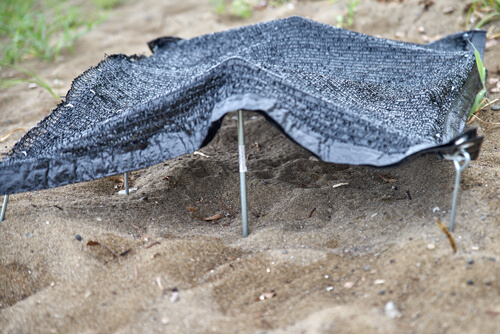
Shade created with a blackout net
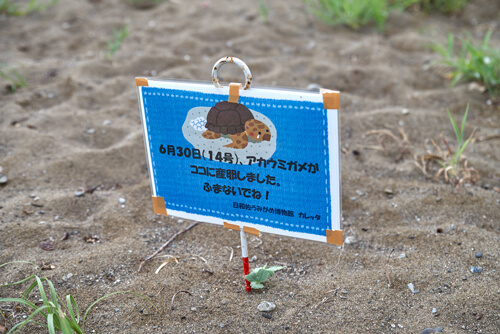
A marker for protecting a nest of sea turtle eggs
Persevering what we can do and halting a decline in the number of sea turtles
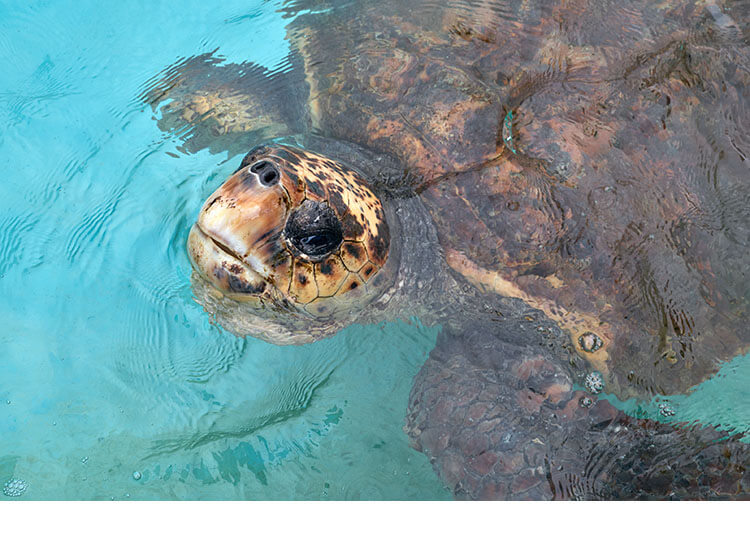
There are believed to be seven to eight species of sea turtles in the world. Among them, three species spawn in Japan, namely loggerhead turtle, green turtle and hawksbill turtle. Loggerhead turtle accounts for a large part of them. Young loggerhead turtles grow in the waters off Hawaii and Mexico on the other side of the Pacific. When they have grown up, loggerhead turtles return to Japanese coastal waters. They live in the East China Sea or the Pacific until coming to the Pacific coast of Japan for laying eggs. As they migrate across national borders, cooperation between countries is truly important. Japan, in particular, needs to take a big role and responsibility because Japan is the only spawning ground for the loggerhead turtle population in the northern Pacific.
Circumstances surrounding sea turtles in Japan are extremely unfavorable. In Japan, people are not very much aware of the fact that coasts are very delicate and need protection. The spawning grounds keep dwindling. About the issue of bycatch , there are no clues to the solution. Recently, a problem of bycatch by Chinese fishing vessels has emerged in the East China Sea, an important feeding ground for loggerhead turtles. The new problem is arousing concern.

Aiming for a “town coexisting with sea turtles,” Hiwasa has been offering “Eco-tourism” for about 40 years to show and protect the turtles at the same time. It used to attract more than a million visitors to the Ohama Coast but the coast is not as busy as before probably because the number of turtles is declining. What’s more, aging society and rural exodus seem to make things worse.
Under these circumstances, we must be careful not to trigger a downward spiral of the “Eco-tourism.” A decline in the number of turtles leads to a decrease in the number of tourists and a fall in the value as tourism resources. That further results in deterioration in the quality of protection and management and a decrease in the residents’ awareness. We must avoid such a vicious cycle. To that end, it is important to persevere the conservation with feeling our way and take measures if effective even slightly. That is also important in handing down the Hiwasa’s history of sea turtles and tourism resources.
A rise in the hatchability is good news to us. We believe we are playing a role in halting a decline in the number of turtles coming ashore. We have protected eggs this time but we cannot relax yet. It is said to take 20 to 30 years for a turtle to grow up. Even if the hatchability is improved, it is a long way to go before any effect is felt. In today’s Japan, it is not easy to restore the environment safe for sea turtles. However, we are not alone. There are many people concerned about sea turtles and working hard for them across the country. If we join hands and persevere what we can do, the issue of dwindling sea turtle populations will be getting closer to a solution bit by bit.
Sea turtles survived 100 million years by adapting to changing environment. I believe they are capable of adapting to climate change and global warming. We may be faced with new challenges but I am sure we will be able to restore the Ohama Coast back to the way it was by keeping our eyes open for a downward trend and putting ourselves in the position of turtles in their conservation.

(Posted on March 6, 2018)
Reference sites / Sources
- Japan Sea Turtle Magazine 2016 (Sea Turtle Association of Japan)
- Sea Turtle Conservation Handbook (Ministry of the Environment)
- Report of Monitoring Sites 1000 sea turtle program in FYs 2014 and 2105 (Ministry of the Environment)

